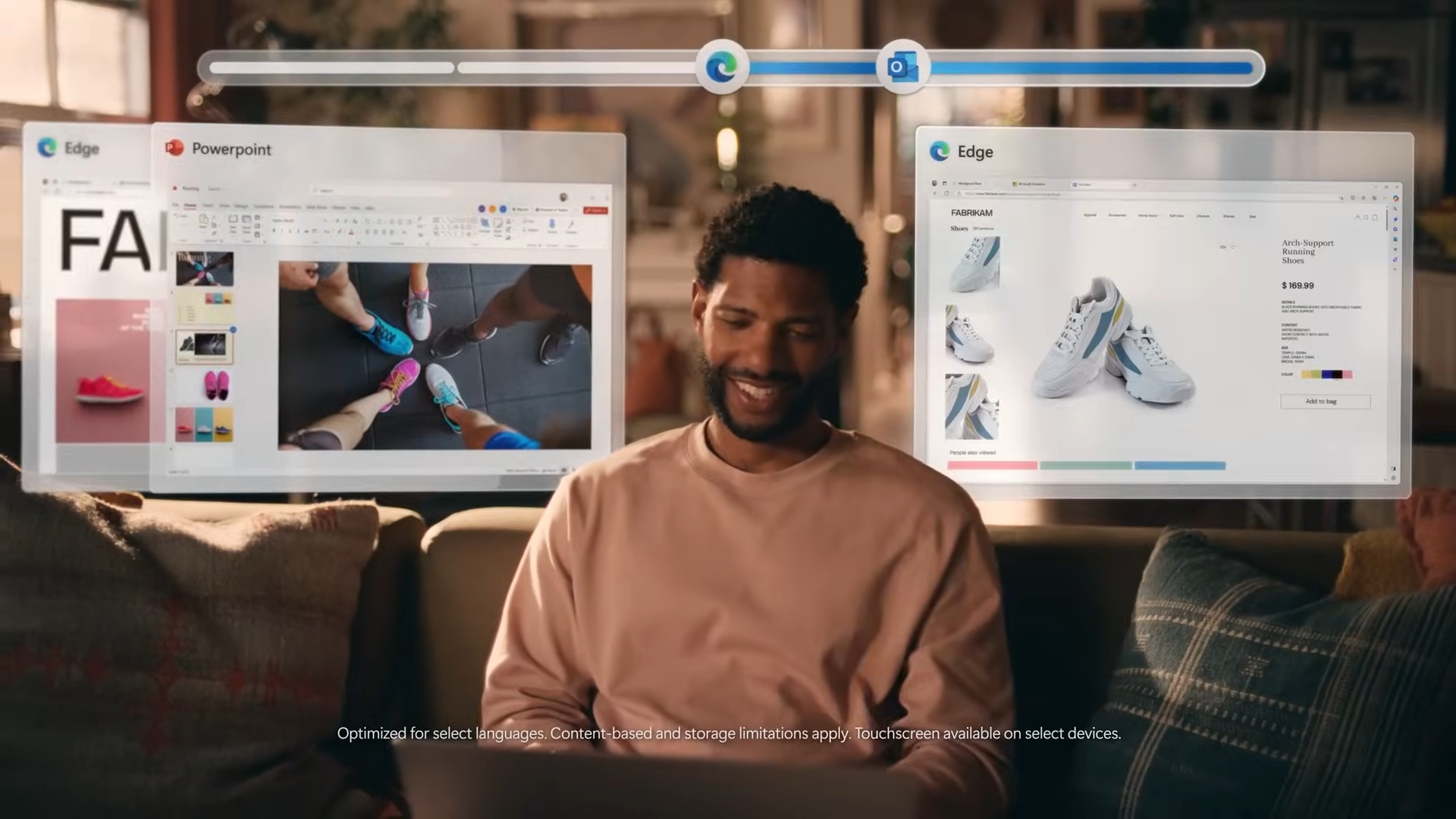Every Ratchet & Clank game (including Rift Apart) ranked from worst to best
After almost two decades since the original release, Ratchet & Clank still holds up
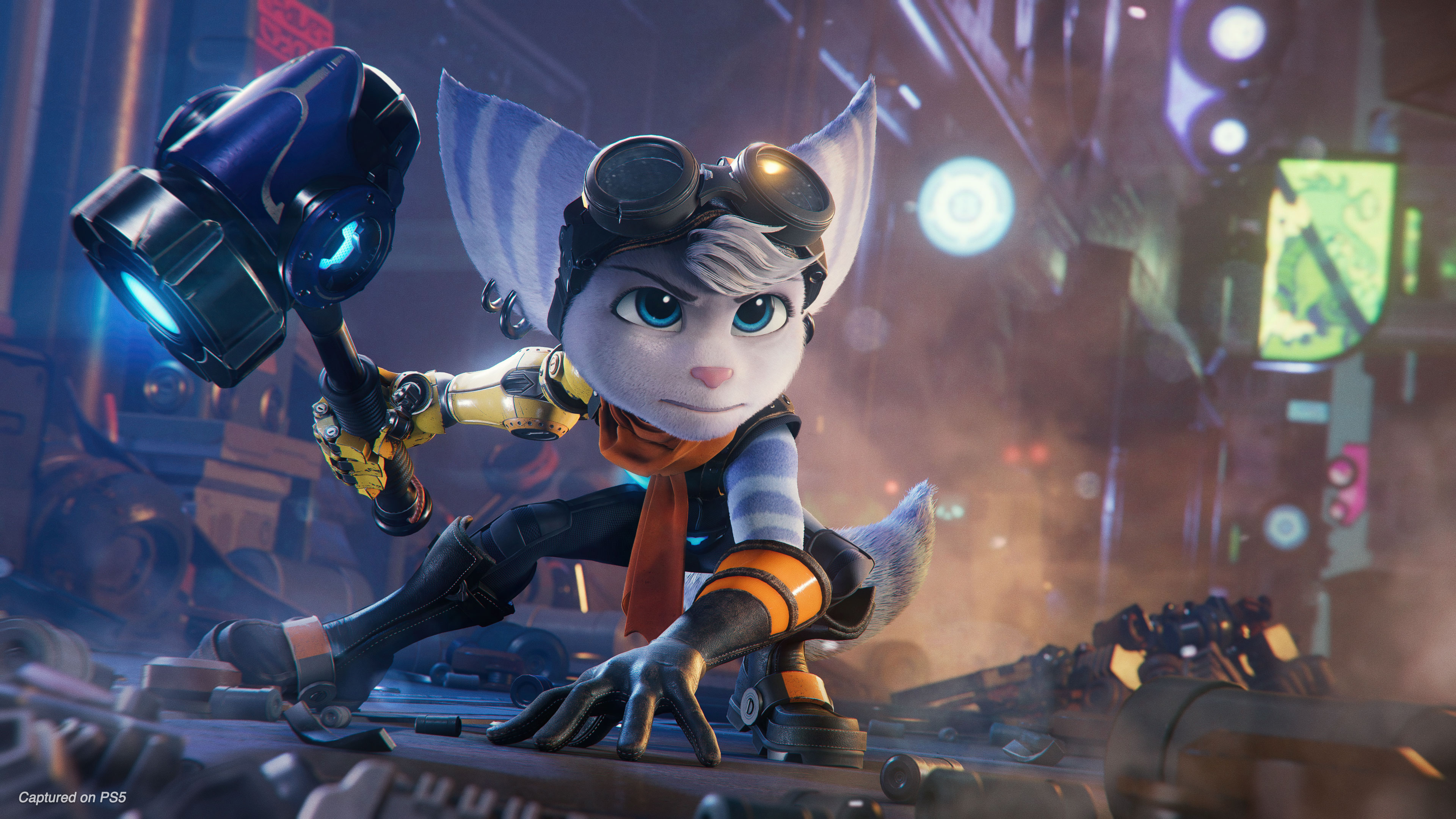
In celebration of Ratchet & Clank: Rift Apart, I decided to embrace my childhood by binging the Ratchet & Clank series. This involved playing 13 games and sinking 100 hours of playtime over the course of a month. It was an awesome journey, and an even more awesome way to prepare for the latest game in one of my favorite franchises.
Now, the fruits of my labor come forth. Nearly every game in the series is ranked here, including Rift Apart. However, I didn't play Before the Nexus and Going Mobile; they’re mostly irrelevant and are only available on mobile devices.
Without further ado, here’s every Ratchet & Clank game ranked from worst to best.
- PS5 backward compatibility failed me so I used my dusty PS3 to play Ratchet & Clank
- Check out the Xbox Series X games and PS5 games confirmed so far
- See our reviews of the Xbox Series X and PS5
Ratchet & Clank: All 4 One (2011)
Ratchet & Clank: All 4 One is a four-player cooperative experience that features Captain Qwark and Dr. Nefarious as playable characters for the first time in the franchise. Players can look forward to series staples such as the return of the RYNO, an arsenal of ridiculous weaponry, and a slew of goofy jokes. It’s too bad this game is terrible.
All 4 One’s blunders include a lack meaningful progression, unrewarding gunplay, and mediocre level design. Players travel between narrow platforms in a fixed perspective, meaning there are few secrets to uncover and not much in the way of exploration. The gameplay isn’t much better, as it boils down to “hold the fire button.” Weapons don’t level up with use and ammo is overly abundant, so there’s no incentive to carefully strategize. It’s difficult to lose and tense moments are non-existent, even when battling bosses.
Ratchet & Clank games often feature obstacles that force players to utilize everything in their arsenal to emerge victorious, but All 4 One fails to capitalize on this design philosophy, making it no more than a mindless couch co-op experience. If you have a group of friends to play it with, the experience might not be unbearable; otherwise, All 4 One is the worst Ratchet & Clank out there.
Secret Agent Clank (2008)
It’s hard to be angry at Secret Agent Clank. It’s a PSP game that ambitiously shifts the spotlight from Ratchet onto his beloved sidekick. However, this spotlight is taken away from the third-person shooting and platforming elements far too often. Sneaking around as Clank, creating disguises out of enemy robots, and tossing bouncing bow-ties at enemies are the moments when the game is at its best.
Stay in the know with Laptop Mag
Get our in-depth reviews, helpful tips, great deals, and the biggest news stories delivered to your inbox.
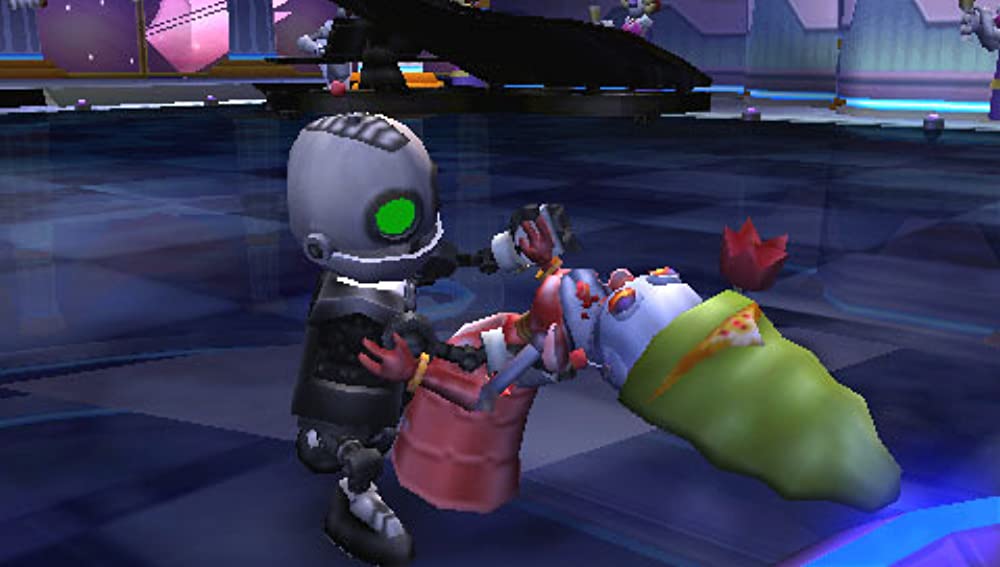
Unfortunately, the focus on mini-games sours the experience. Overlong snowboarding and boating portions, rhythmless rhythm games (music is never played yet you’re meant to press buttons in the correct order), and simple puzzles involving little robots are unnecessary additions. At some point, players take control of Ratchet, but only in a tiny arena with a limited arsenal of weaponry. Secret Agent Clank could have been a competent game if it honed in on the most engaging elements of the experience. Instead, it’s a complete slog to sit through.
Ratchet & Clank: Full Frontal Assault (2012)
Full Frontal Assault is the best bad Ratchet & Clank game. It’s plagued by performance issues and the turret defense mechanics are vapid, but at the very least, it still plays like Ratchet & Clank. The game’s environmental detail is impressive, as each planet possesses a different color palette and aesthetic; where one takes place in an alluring natural jungle, another features a volcanic planet that has players jumping between metal platforms while staring up at a dreary red-tinted sky. The game also encourages exploration and the use of gadgets to find hidden areas with weapon crates which are placed around levels and are the only way to increase your firepower.
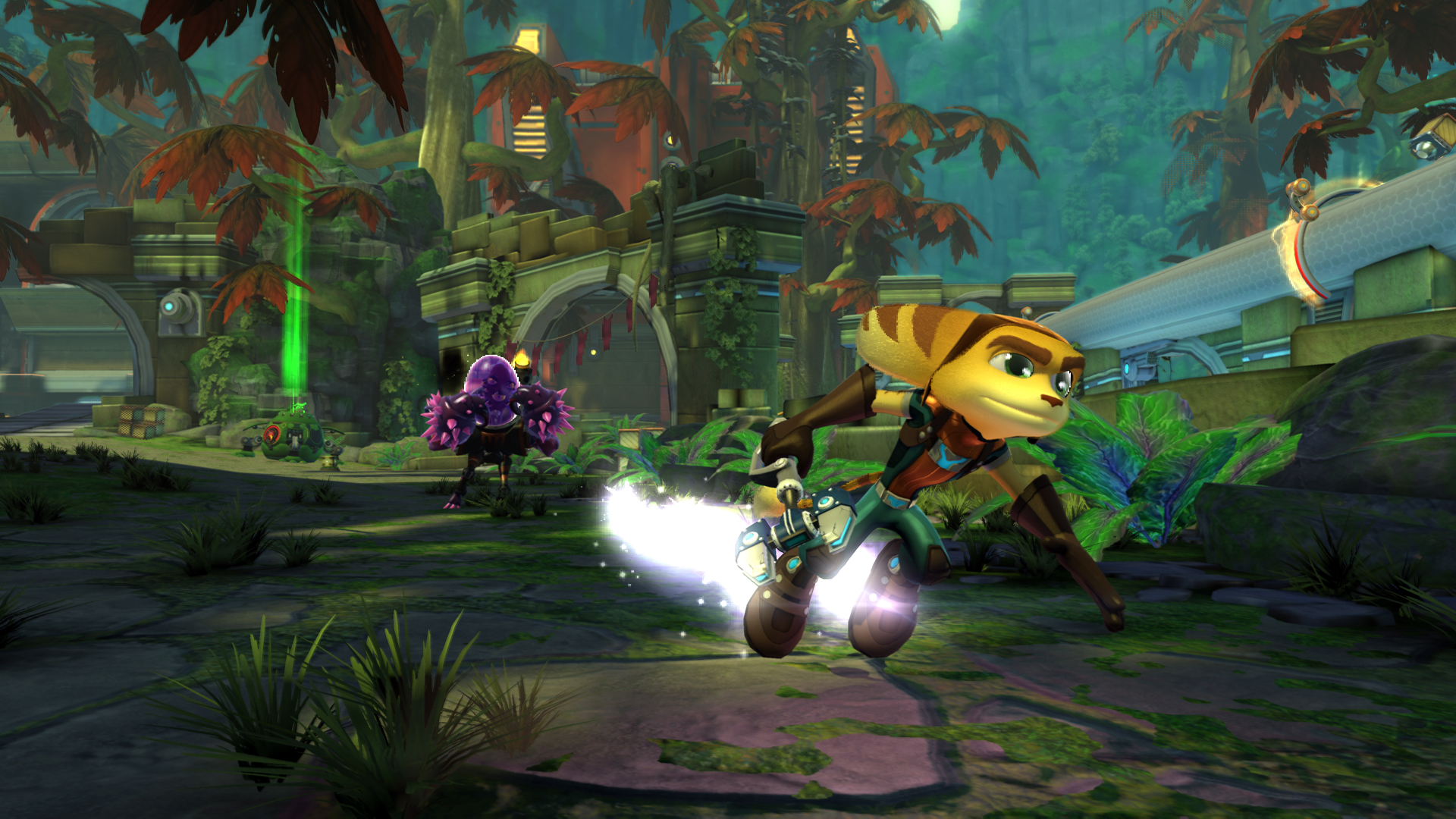
While this may make Full Frontal Assault sound awesome, there’s not much else to enjoy here. There are only five levels that take place across three planets, and although they seem cool at first, having to redo any of them destroys the illusion; secrets aren’t randomly generated, which means playing through an area once means you won’t get anything more out of it.
Additionally, every planet features the same turret placement. Full Frontal Assault doesn’t cleverly encourage alternate methods of setting up a base, and since the game never gets too overwhelming, there’s no need to strategize. Simply place Warmonger Turrets (rocket launchers) at the entrance of your base and almost nothing can get in. It’s a game that fundamentally fails as a turret defense, but the classic third-person Ratchet & Clank gameplay keeps it from tedium.
Ratchet & Clank: Quest for Booty (2008)
Quest for Booty is a standalone expansion that takes place between Tools of Destruction and A Crack in Time. Players go on a swashbuckling adventure battling pirates, jumping between sailing ships, and exploring dark caverns for treasure. These elements contribute to the game occasionally feeling adventurous, but it is hindered by a lack of original content.
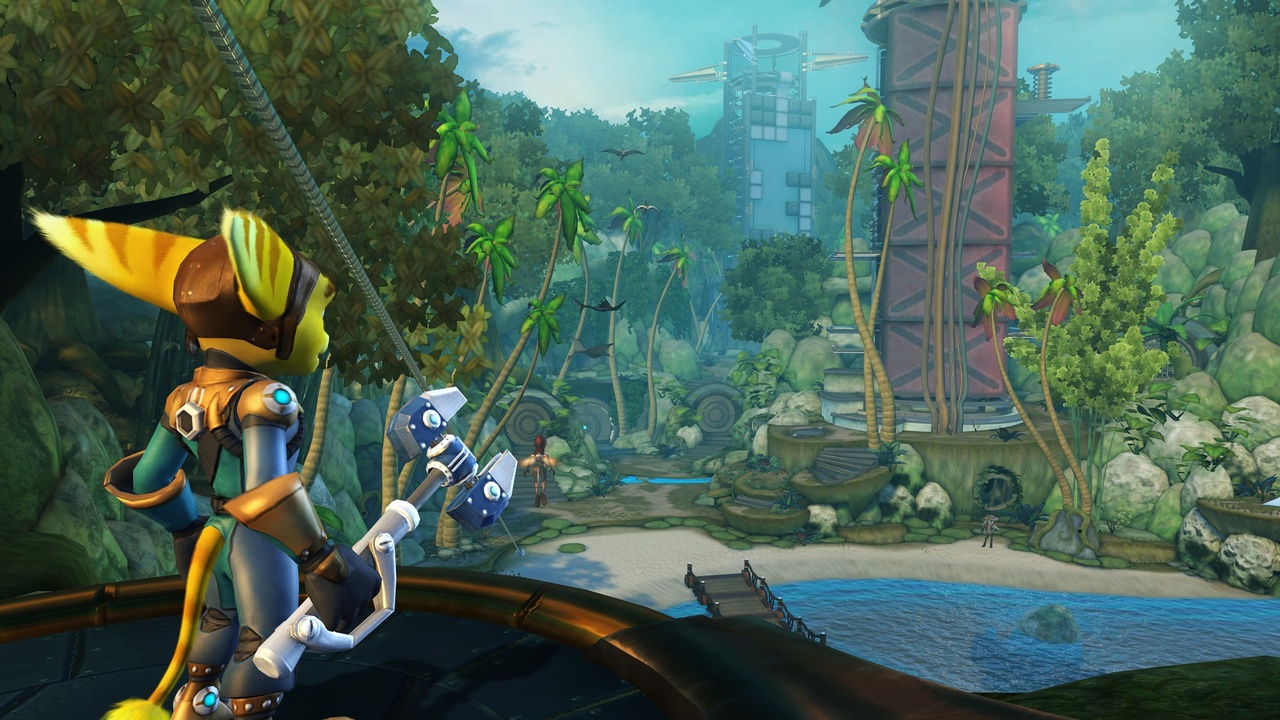
Quest for Booty features no new weapons; each firearm is taken directly from Tools of Destruction, yet for some reason, the full arsenal from that game isn’t present. Certain fights are also reused, including those involving the beefy mechanical pirates, all the standard enemies, and the sailing ship cannons. Other Ratchet & Clank games have the player explore areas while battling against opponents that are naturally placed within those regions, whereas Quest for Booty just throws foes at the player in waves on a single point (probably to pad the game’s length).
Although the game is quite severely flawed, it features Tools of Destruction’s incredible mechanical foundation, which makes gunfights fun thanks to an explosive arsenal of weapons and responsive movement.
Ratchet & Clank: Size Matters (2007)
Size Matters is the series’ first venture onto the PSP, and although it’s not good, it has a number of redeeming qualities. Unlike Secret Agent Clank (which was released a year later), some of the mini-games in Size Matters are actually fun. Hoverboard races from the first game make a return, except this time, boost packs allowing Ratchet to fly are placed around the course. This adds a whole new layer of verticality that creates room for crazy shortcuts and clever maneuvering, making it some of the best racing the series has to offer.
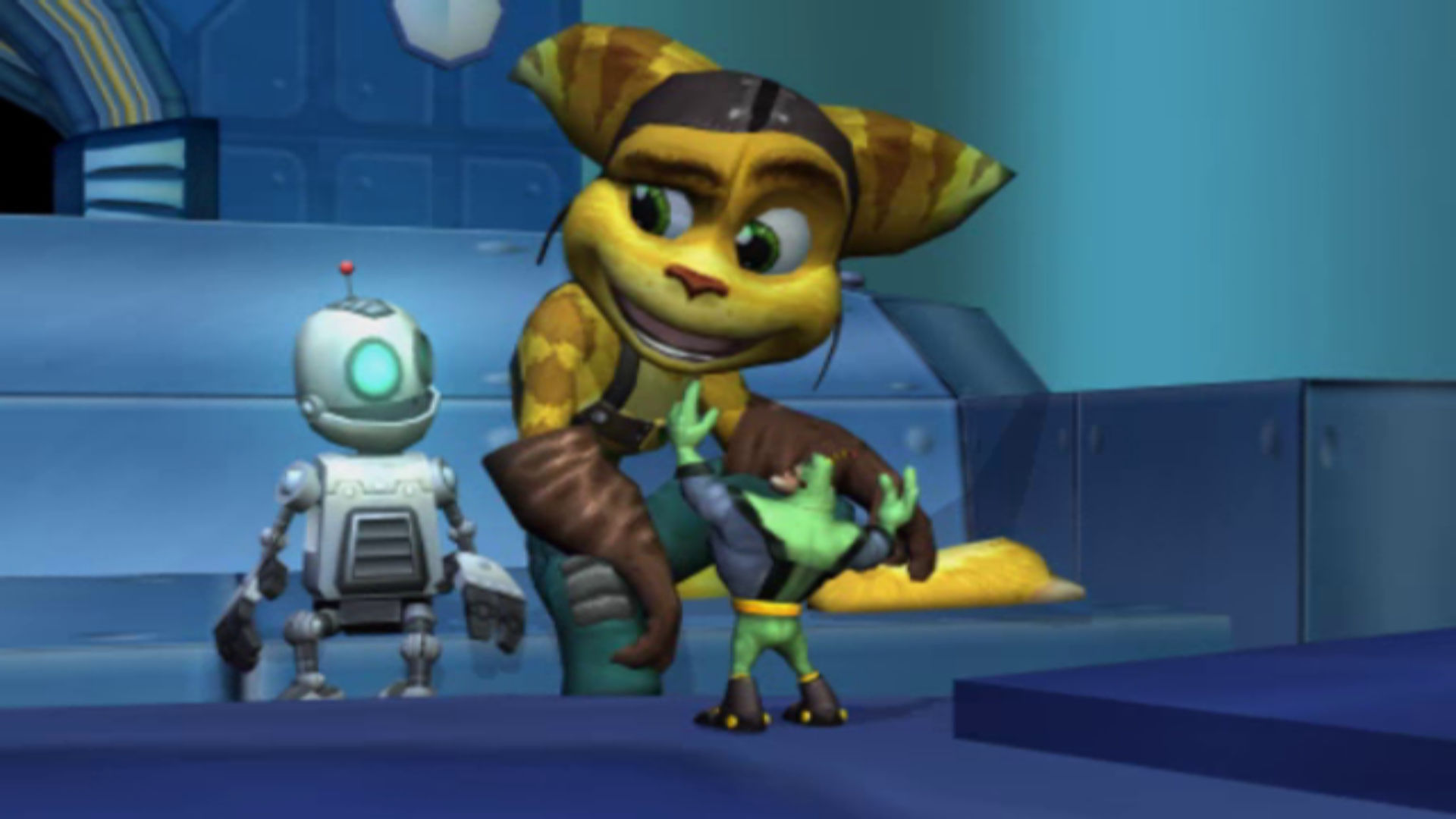
Clank can even play basketball, battle in a demolition derby arena, do little puzzles with his Gadgebots, and fly through space in an on-the-rails shooter. Unfortunately, the signature Ratchet & Clank gameplay is subpar. Firearms are poorly balanced, most environments are unimaginative, and the level design is unnecessarily claustrophobic. Weapons don’t feel as visceral and powerful as they should, often coming across as muffled. However, Size Matters ends on a good note with an exciting final boss who was tough-as-nails to defeat.
Ratchet & Clank: Into the Nexus (2013)
Into the Nexus is a passable experience, but it presents ideas with little creativity; it’s almost as if Insomniac Games was simply fulfilling a quota to publish a traditional Ratchet & Clank rather than attempting to craft a novel experience. However, the game’s minimal risk-taking isn’t surprising, as All 4 One and Full Frontal Assault stepped so far outside of the series formula that they’re often regarded as the worst entries.
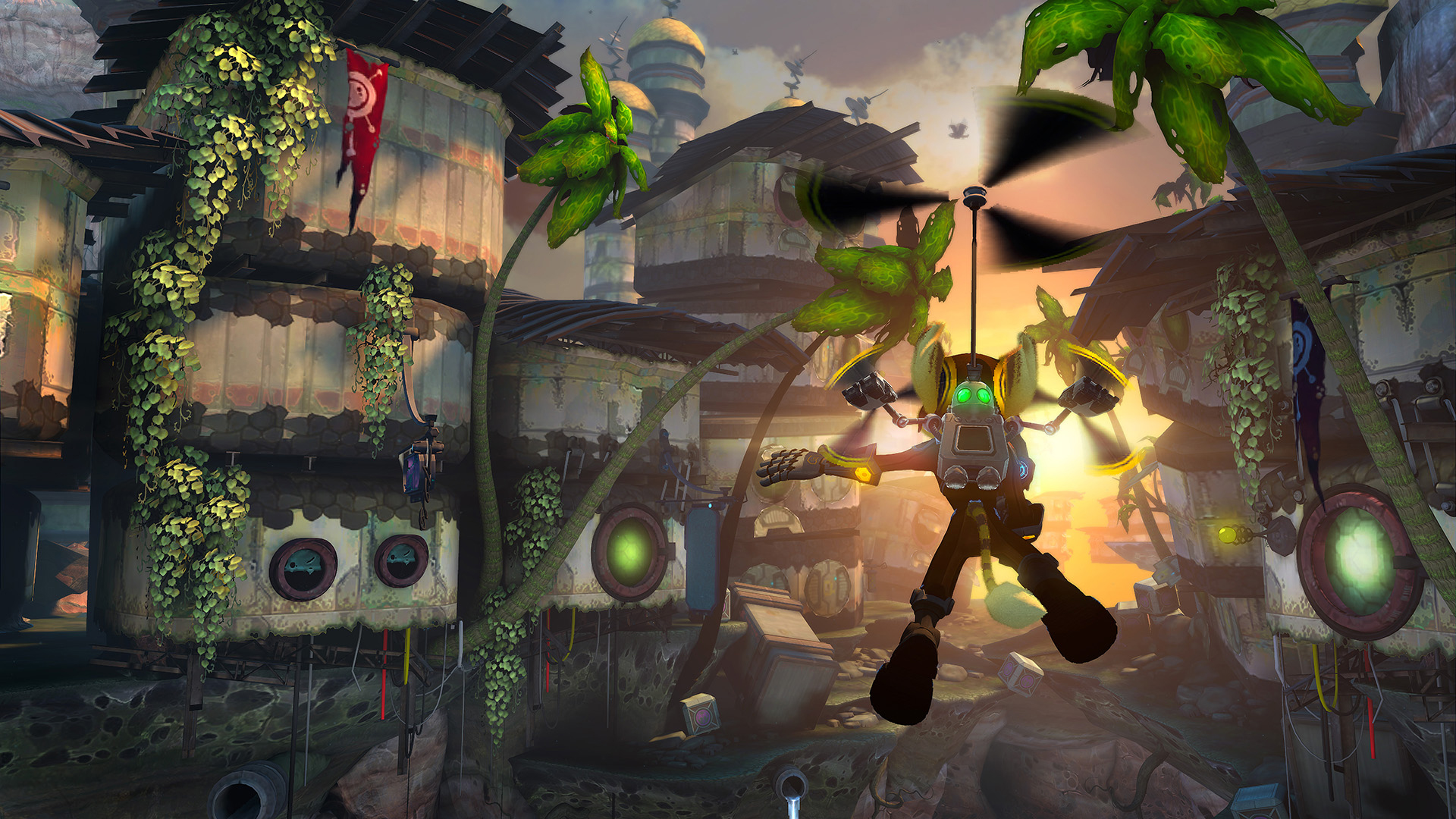
Into the Nexus was likely Insomniac’s attempt to get back on track, and it works… somewhat. The ability to jump between Gravity Boot platforms adds an exciting layer of mobility, while the new Grav-Tether makes for fun puzzles and new ways to explore a level. The expanded weapon trees are exciting; pushing to reveal mystery nodes by unlocking those around them gives players more incentive to build their arsenal.
However, Into the Nexus is almost entirely devoid of new weaponry. Although the Netherbeast is great, the rest of the arsenal is overly familiar, and even the never-before-seen firearms have new coats of paints on familiar mechanics. There are also only four planets in the game, with one of them being a swamp environment where players collect key items to sell to the smuggler. This is almost identical to the one present in Tools of Destruction, which made this area feel redundant. The arena content is basic, too, offering minimal challenge and gimmicks that are a bit too familiar.
Ratchet & Clank (2016)
Ratchet & Clank (2016) is a reboot of the franchise based off of a movie that launched at around the same time. It features iconic areas from the original 2002 game with occasional twists to fit trends that became commonplace for the series over the years.
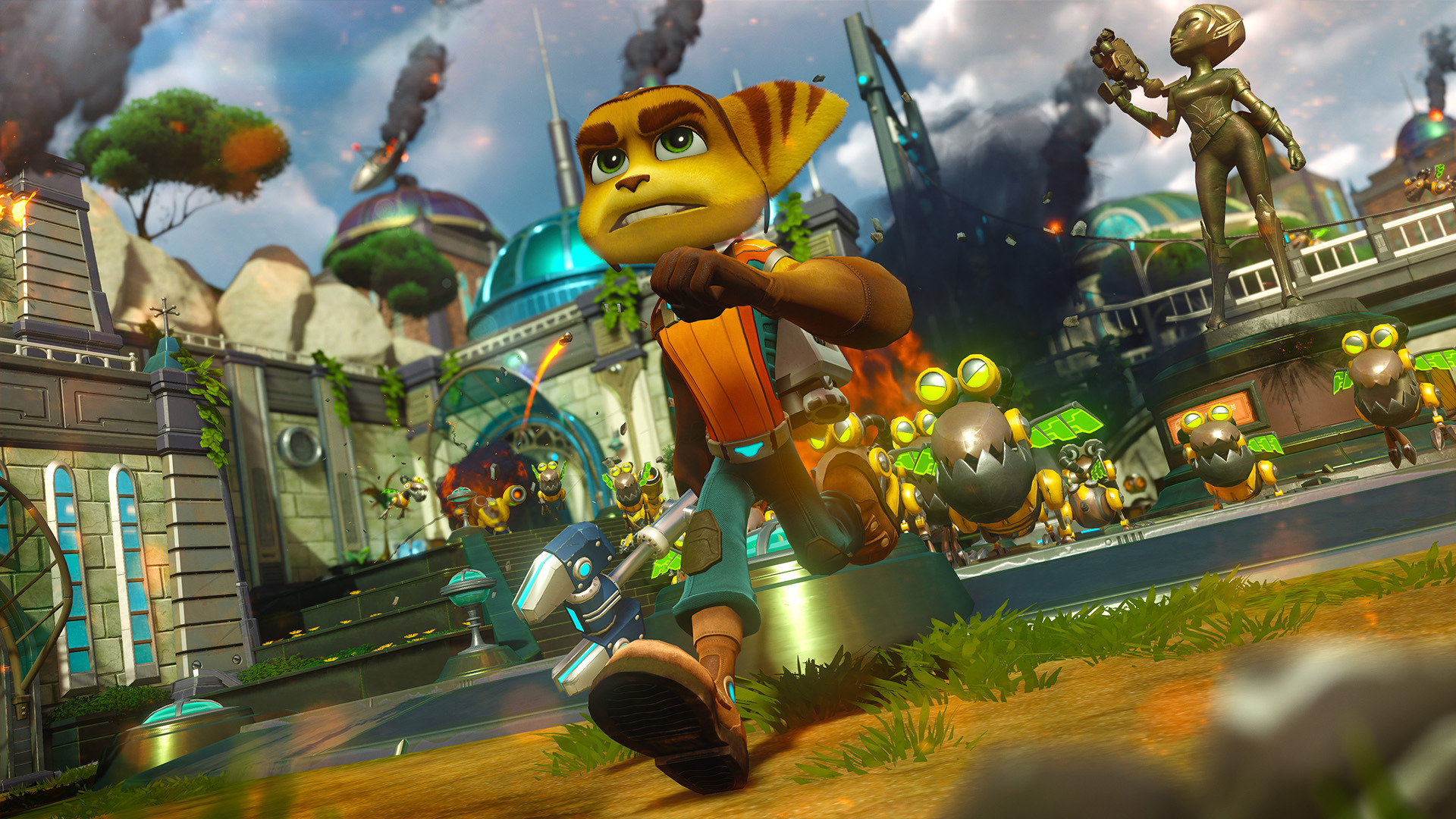
This Ratchet & Clank reboot possesses engaging gunplay, bringing back the most beloved weapons in the series to dispatch foes with. Although most of the arsenal is unoriginal, additions like the Pixelizer (essentially just a shotgun that turns enemies into 16-bit sprites) and the Proton Drum (an area of effect weapon that constantly shocks enemies to the core) are great fun. The game also features Clank-based puzzles that are far more enjoyable than those in the original game.
However, the story is uninspired. Ratchet is ruined as a character, now a mindless fanboy with almost no identifiable goals or interests. In the original game, both Ratchet and Clank often bantered, constantly finding issues with the other as they had different objectives. Throughout the story, we watched as their relationship grew more friendly as they learned to work together. In this reboot, both characters like each other immediately, and for some reason, neither has a presence and they rarely interact with one another. It’s easy to forget that Clank is even there.
Ratchet & Clank (2016) also doesn't look great. The lighting is harsh and unnecessarily realistic, which often clashes with the more colorful areas. Plenty of assets seem random, almost as if they were placed haphazardly. Models don’t blend well either; it looks far too much like it’s in-engine, whereas older Ratchet & Clank games used softer lighting to make the world look smoothly animated. Thankfully, this new aesthetic sometimes works when coupled with less colorful areas that are meant to be gritty all around.
Ratchet: Deadlocked (2005)
Ratchet: Deadlocked expands the series’ iconic arena mechanics, boasting a level-based structure where players must fulfill an objective to move onto the next level. This is different from the original formula, which encouraged natural exploration throughout open planets. The result is surprisingly effective, and although it’s formulaic, the challenges are engaging and usually take the player to unique environments that boast a darker atmosphere. Players can also enhance their weapons with unique modifiers, and for the only time in the series, firearms can be leveled up to +10 on the first playthrough.
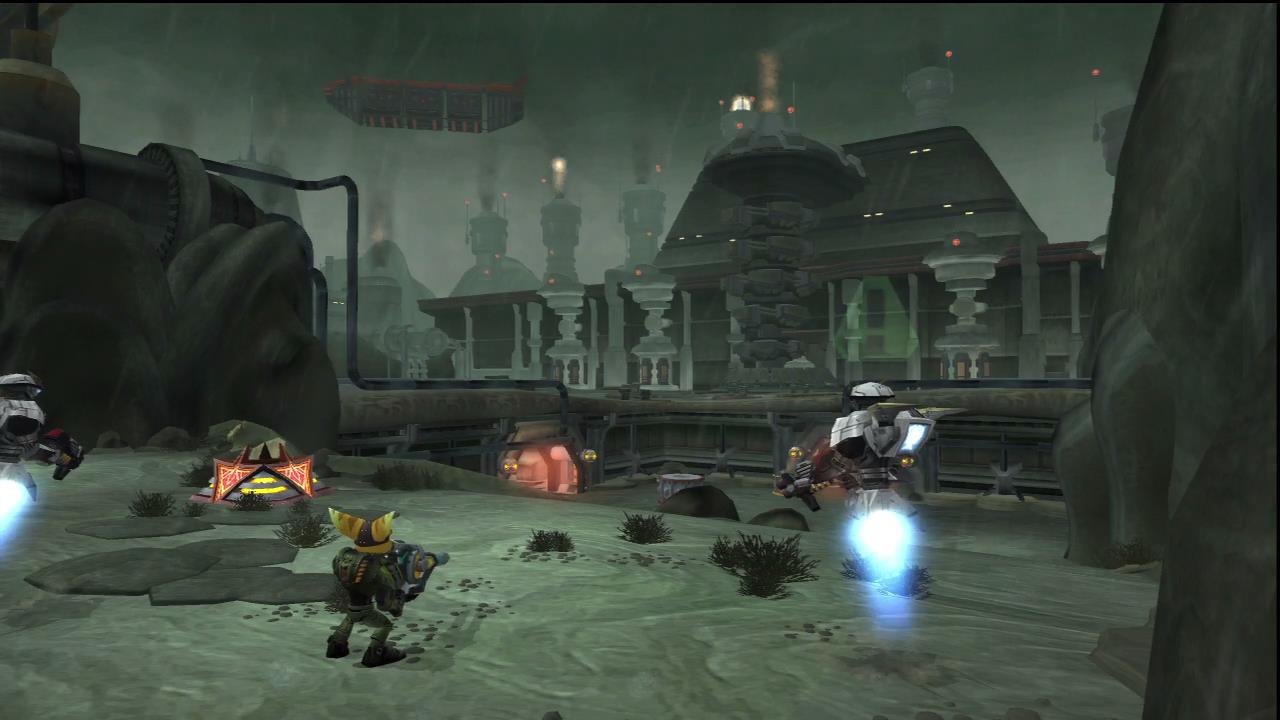
However, Deadlocked can get repetitive. Players often revisit an arena hub that doesn’t change much between encounters, meaning it won’t offer anything new after the first few playthroughs. Optional challenges are also surprisingly sparse, and the ones that are present can be repetitive.
Regardless, Deadlocked proves that straying away from the Ratchet & Clank formula can work. The game also boasts the best soundtrack in the series, featuring tons of darker electronic tunes that enhance the intensity of combat encounters.
Ratchet & Clank (2002)
Ratchet & Clank is held back by outdated gunplay; it’s impossible to aim properly and strafing hadn't been introduced to the series yet, meaning players could only fire in the direction they’re running. When faced with challenging enemies, I’d often find myself hiding behind a crate, going into first-person mode, and firing. This destroyed the fluidity of every fight. It’s also reflected in the arsenal, which was often focused on gadgets that auto-attack enemies rather than weapons requiring players to aim and shoot.
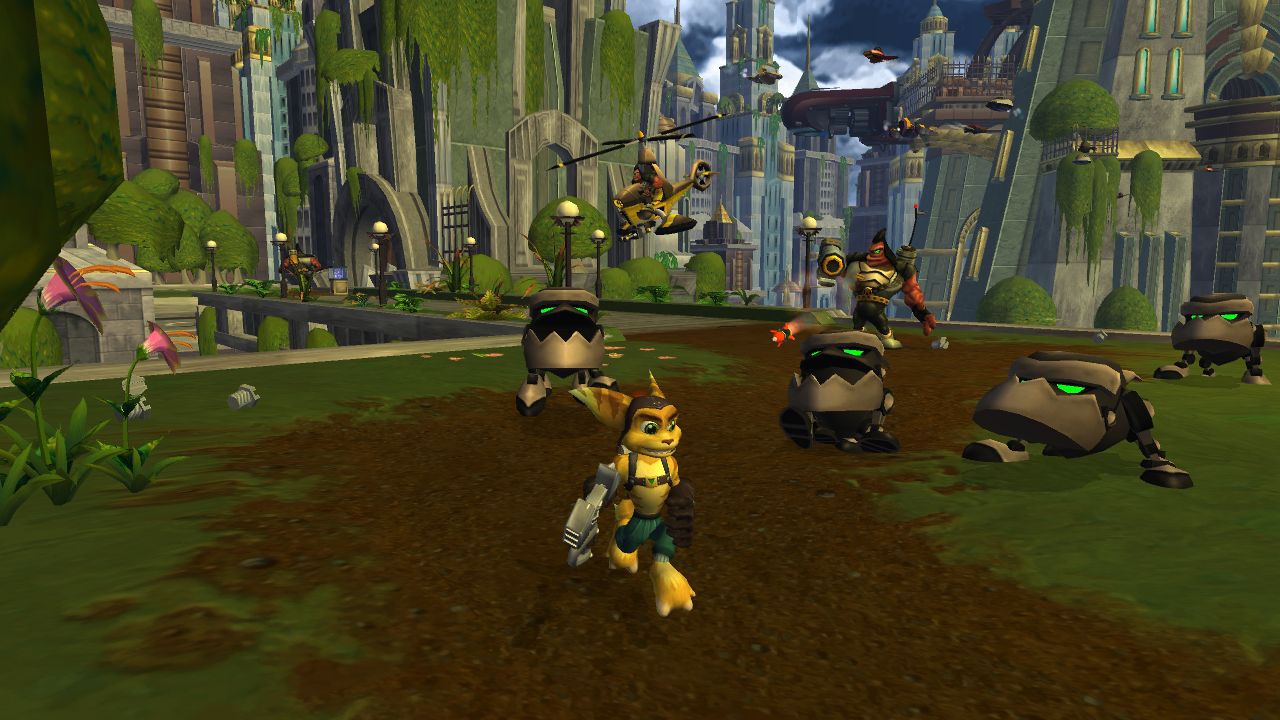
However, Ratchet & Clank boasts some of the best environments in the franchise thanks to its dark atmosphere, terrifying enemy designs and gorgeous art direction. Exploring the dim deserts of Outpost X11 while battling creepy robots wielding flamethrowers is unforgettable. And taking in the near-destroyed city of Oltanis, grappling onto hidden Swingshot points, and navigating tight corridors as enemies bombard the player with explosives is undeniably striking.
Ratchet & Clank: Rift Apart (2021)
When Ratchet & Clank: Rift Apart was revealed at Sony’s Future of Gaming event last June, I squealed with the amalgamated joy of a thousand bubbly babies. The release of a canon sequel that tackles the events of A Crack in Time has been a pipe dream of mine since 2009. It felt as if the series was dead until I saw this trailer, and after finishing Rift Apart, it seems Insomniac Games intends to begin a new saga for my favorite childhood heroes.
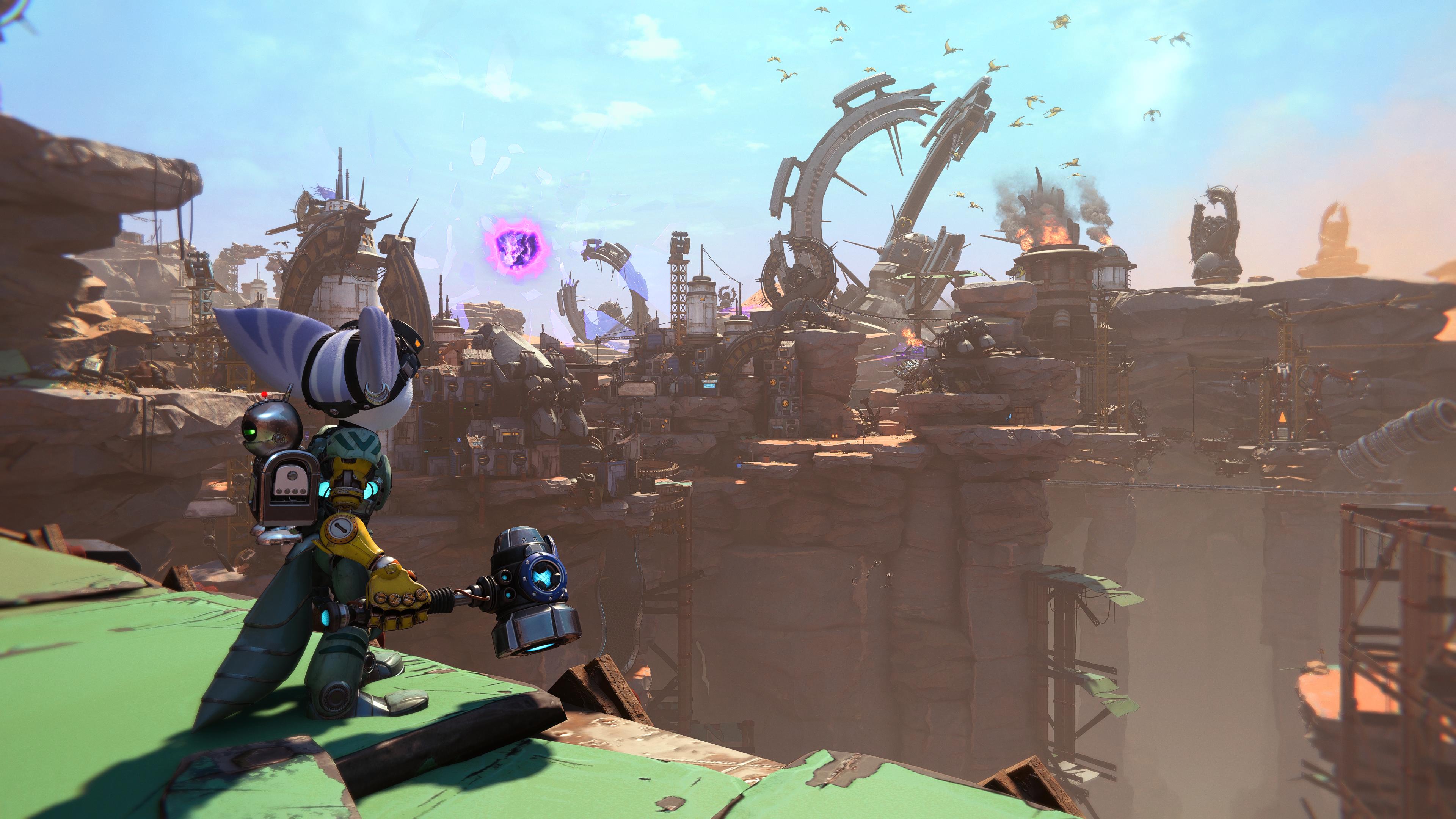
Unfortunately, Rift Apart's story didn’t deliver; it barely built upon the present narrative, and the newly developed arcs were underwhelming. It felt like an excuse to catch new fans up to the current events of the storyline. Regardless, the addition of Rivet was excellent. Her witty charm is the star of the script, showcasing that the franchise’s sense of humor is as amusing as ever.
Insomniac Games also knocked it out of the park with the game’s diverse arsenal of weapons, exhilarating gunplay, and stunning graphical fidelity. Certain scenes in Rift Apart are jaw-dropping, and although half of the areas were lacking in visual creativity, the best planets in the game boast an unmatched level of detail.
Ratchet & Clank: Going Commando (2003)
Going from Ratchet & Clank to Going Commando is profound. Players can finally strafe while aiming, allowing for precision-fire while engaged in intense encounters. Additionally, this is the first time weapons level-up with use, and since the game features the largest selection of guns in the series, there’s a lot of variety to have fun with.
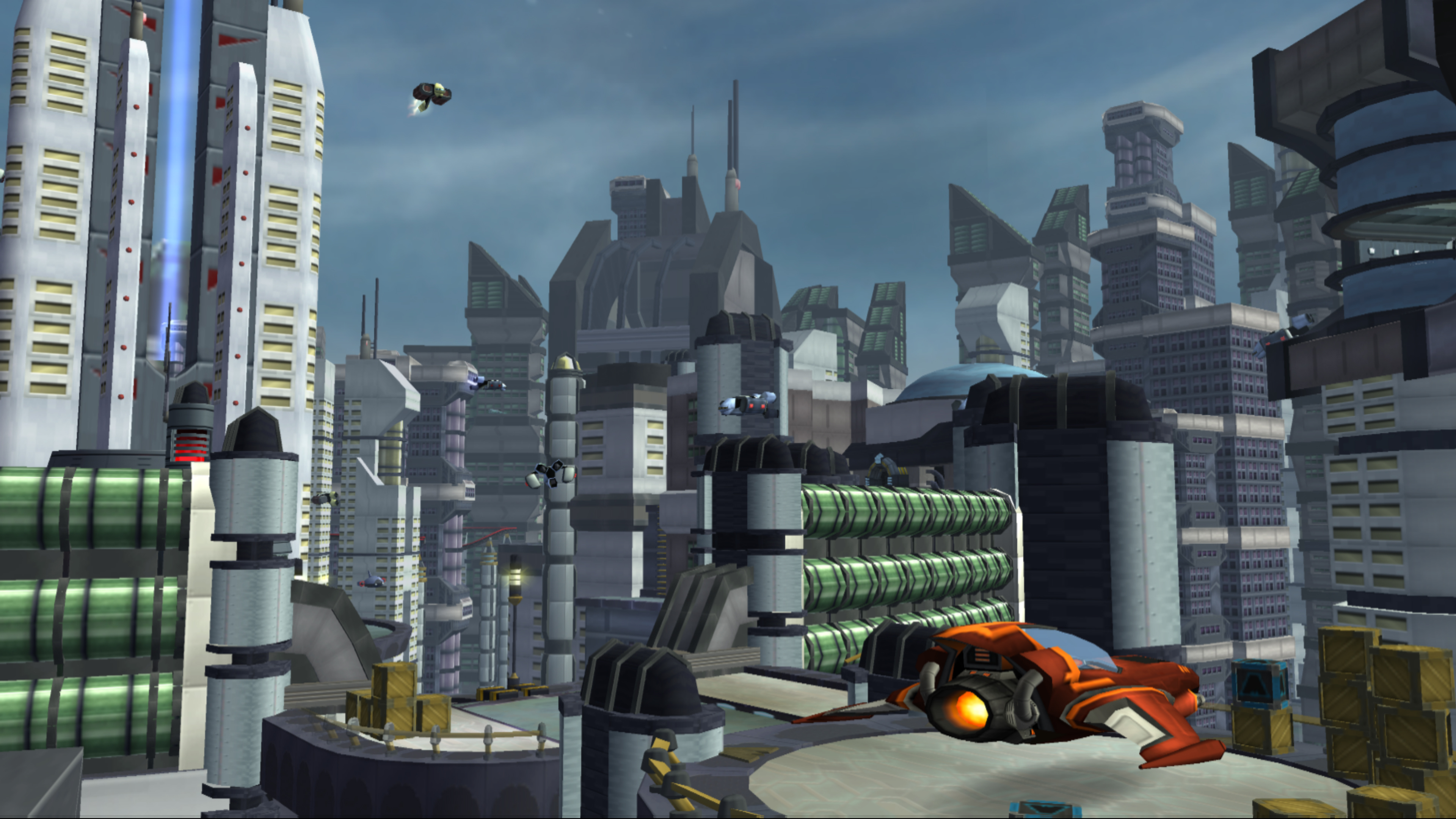
The environments feature an excellent use of cooler colors and are full of detail. Additionally, the introduction of arenas is extraordinary; these challenges are handled incredibly well, with great fights like The Impossible Challenge testing the player’s skill by putting them up against 60 waves of enemies.
Going Commando does suffer from a final boss that is far too easy; its moveset is simple and the character is thematically underwhelming. The narrative doesn’t end on a particularly compelling note either, but regardless, it’s one of the best Ratchet & Clank games out there.
Ratchet & Clank: Tools of Destruction (2007)
Tools of Destruction is the series at its best as far as humor goes. It’s the only game that had me dying of laughter, and it features the most charming interactions thanks to the space pirate crew and their casual banter. It’s also the first time we see Ratchet & Clank’s narrative go somewhere serious. Rarely do both Ratchet and Clank face severe conflict, so Tools of Destruction has the iconic duo unraveling more mysteries about their pasts — and all of this buildup leads to the most epic entry in the series (A Crack in Time).
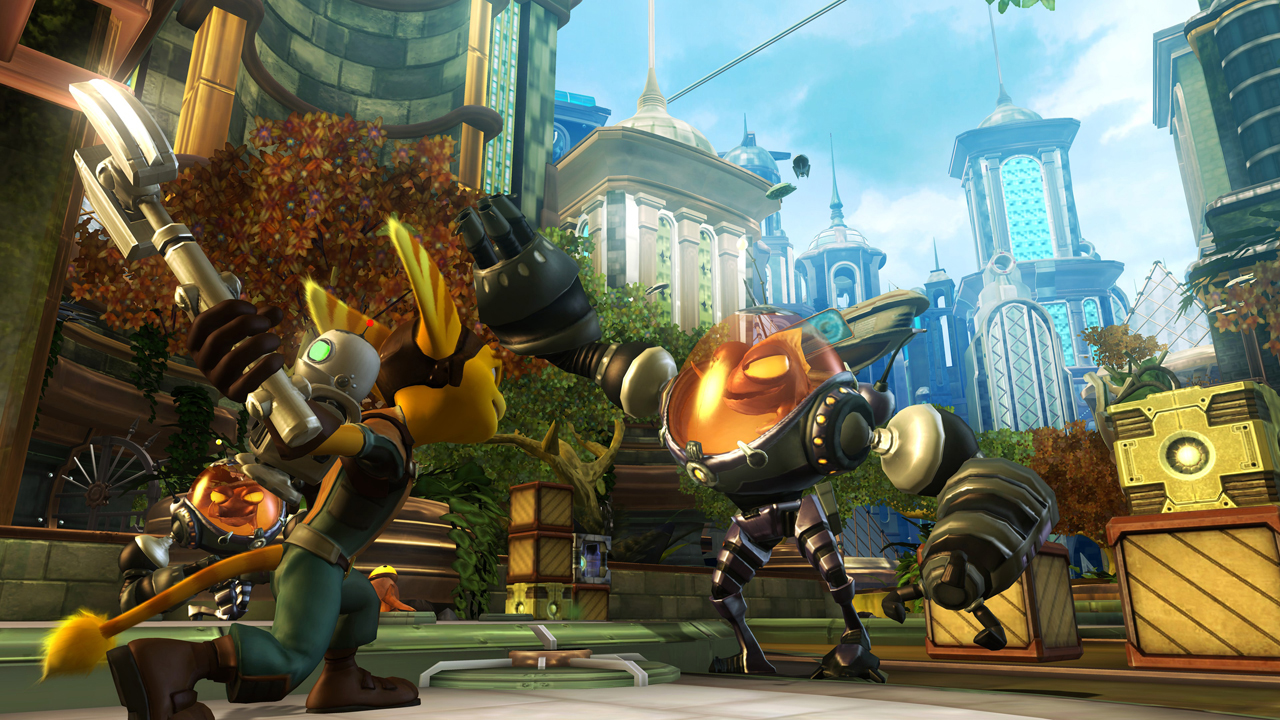
Tools of Destruction also features a great lineup of weapons and some of the most difficult combat encounters in the series. Better yet, the gameplay relies on your ability to dodge, conserve ammo, and power up your favorite weapons to overcome challenges. Tools of Destruction’s final boss is possibly the hardest in the series, and there are plenty of moments where I died over and over while exploring a planet, forcing me to try as hard as possible to emerge victorious. It’s possibly the most intense game in Ratchet & Clank history.
Ratchet & Clank: Up Your Arsenal (2004)
Up Your Arsenal boasts incredible creativity in its weapon selection; it’s also top tier as far as animation and sound design go. Insomniac Games did not hold back, inventing classics such as the Flux Rifle, Plasma Whip, Annihilator, Infector, Shield Charger, Disc Blade Gun and Rift Inducer. Many of these have been repurposed in future entries, often finding a new coat of paint to differentiate them; this just goes to show how inspirational the game’s weapon lineup has been for the franchise as a whole.
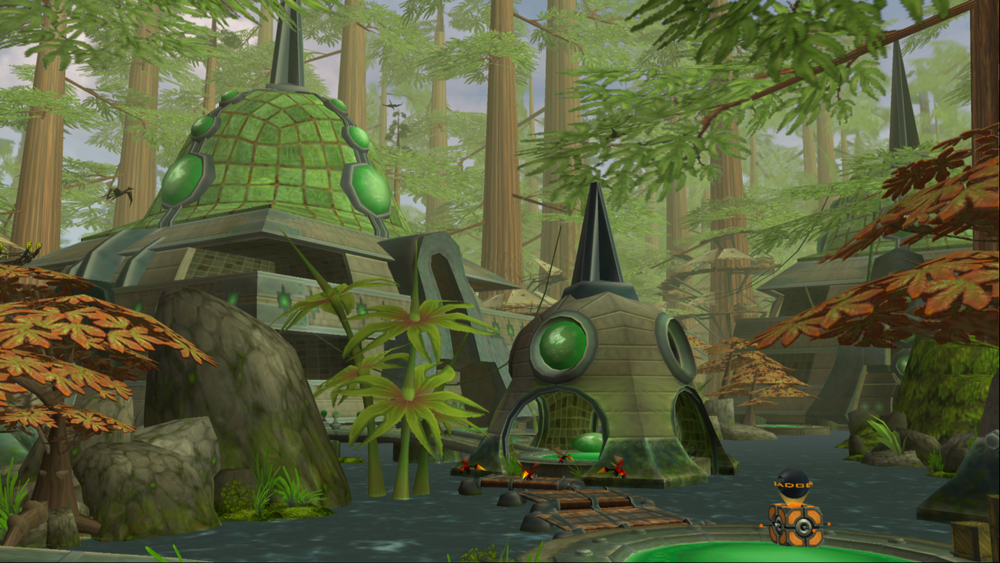
Up Your Arsenal also introduces the series’ most iconic villain: Dr. Nefarious. This mechanical mad scientist has the wicked plan to turn all “squishies” (organic life) into robots. And his evilness is in its prime here, showcasing that he can be equal parts hilarious and scary. The game also introduces the Starship Phoenix, an iconic hub area that lets players purchase new weapons, play Qwark’s vid-comics, engage in VR training, get new armor, and interact with classic characters like Helga von Streissenburgen and Skidd McMarx.
One of the coolest aspects of Up Your Arsenal is that it’s the only game featuring boldly structured open areas that players can explore in vehicles and flying ships. While this mechanic feels simple at first, it escalates in intensity as harder enemies appear and the objectives become more challenging, providing some great arcadey fun.
Ratchet & Clank: A Crack in Time (2009)
A Crack in Time is the most daring Ratchet & Clank entry. It’s the only instance where the franchise has attempted an open-world structure, and the game features the most evocative narrative the series has ever seen.
Although A Crack in Time is 12 years old, I’m still going to keep things vague; I wouldn’t want to ruin this impactful story for anyone, regardless of how long it’s been. The game unravels the deeper history of our iconic duo, providing both with a powerful arc and inner conflict. They develop and change throughout the script as they realize their destinies may have been grander than they could have ever anticipated; there’s an emotional core here that will resonate with most fans of the franchise.
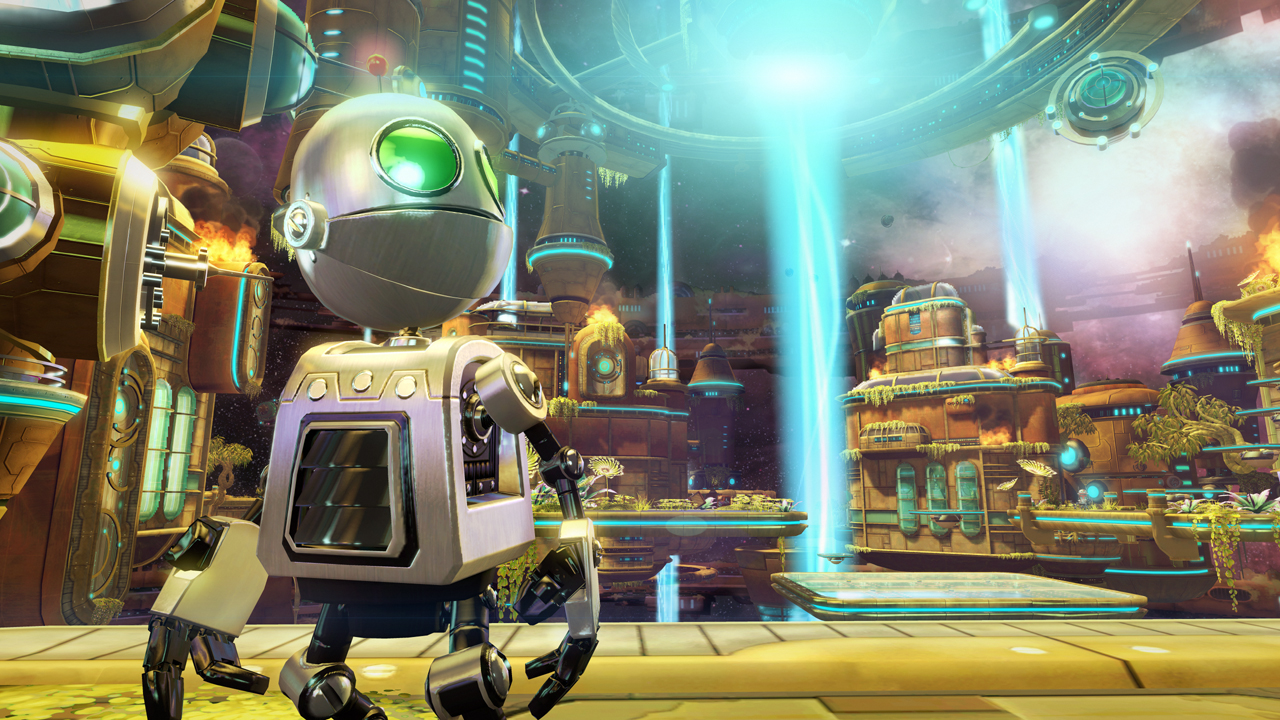
Disregarding story elements, A Crack in Time also features larger levels that are more engaging to explore thanks to a grander focus on mobility. Speedily traversing each planet with the Hoverboots makes it easy to travel from one destination to the next, making it difficult to play another game without them. Additionally, the arena content here is profound; the enemies are actually scary to fight, and since certain foes have shields that you need to try and remove, things can get hectic quickly.
And being able to hop into your ship, fly out into space, and continue to control that ship as you travel a solar system is brilliant. This is undeniably clever as an evolution to Ratchet & Clank, and thanks to its alluring environments, excellent arsenal, and awesome upgrade system, A Crack in Time is undoubtedly the best entry in the series.

Self-described art critic and unabashedly pretentious, Claire finds joy in impassioned ramblings about her closeness to video games. She has a bachelor’s degree in Journalism & Media Studies from Brooklyn College and five years of experience in entertainment journalism. Claire is a stalwart defender of the importance found in subjectivity and spends most days overwhelmed with excitement for the past, present and future of gaming. When she isn't writing or playing Dark Souls, she can be found eating chicken fettuccine alfredo and watching anime.
